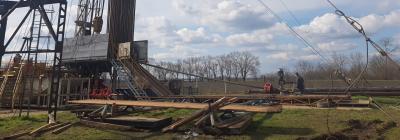The Szentes geothermal field in Hungary
Szentes Geothermal well's was selected as TRANSGEO reference site by University of Pécs.
The Szentes geothermal field is one of the oldest and most intensively produced areas in Hungary. The geothermal operation began in 1958 with the drilling of the Kórház-I thermal well, the success of which encouraged drilling of new geothermal wells both in the investigated area and in Hungary in general. By now there are 40 thermal wells in the Szentes geothermal field including the Fábiánsebestyén and Szegvár areas; 34 of them were drilled before 1980. The Szentes geothermal field is located in the southern part of the Great Hungarian Plain on the left bank of the Tisza River, including the Szentes, Szegvár and Fábiánsebestyén areas. The Szentes area belongs to the northeastern wedging part of the Makó–Hódmezővásárhely Trough, where the pre-Neogene basement is at depths between 4,500 and 5,000 m.
In Hungary, the pilot site will be located in the Pannonian sediments. In the Pannonian sediments, we can already find working thermal wells, such as in the area of Szentes.
The aim of the TRANSGEO project is to explore and exploit areas with similar characteristics to the Szentes area.

